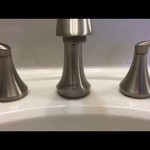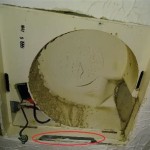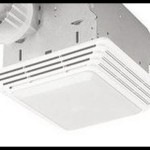How to Replace a Shut-Off Valve Under the Bathroom Sink
Leaking shut-off valves under the bathroom sink can be a major source of frustration. They can cause water damage, lead to higher water bills, and even create a safety hazard. Fortunately, replacing a shut-off valve is a relatively straightforward DIY project that can be accomplished with the right tools and a little patience. This article will walk you through the steps involved in replacing a shut-off valve under your bathroom sink.
1. Gather the Necessary Tools and Materials
Before you begin, make sure you have all the necessary tools and materials on hand. This will help you to complete the project efficiently and without any unnecessary interruptions.
- New shut-off valve that matches the existing pipe size and type
- Adjustable wrench
- Channel-lock pliers
- Pipe wrench
- Teflon tape
- Bucket or container to catch water
- Towel or rag
- Safety glasses
- Work gloves
It is also advisable to have a pair of pliers handy for tightening and loosening nuts and bolts.
2. Shut off the Water Supply
Before you start working on the shut-off valve, you need to shut off the water supply to the bathroom sink. This is crucial to prevent water damage and avoid any potential accidents.
The location of the main water shut-off valve can vary depending on your home's plumbing system. It is typically located in the basement, garage, or utility room. If you are unsure where to find the main water shut-off valve, consult with a plumber or check your home's plumbing manual.
Once you have located the main water shut-off valve, turn it clockwise to shut off the water supply. You should hear a clicking sound as the valve closes. To ensure the water supply is completely shut off, open a faucet in the bathroom to see if any water comes out. If water is still flowing, tighten the shut-off valve further until it is completely closed.
3. Disconnect the Existing Shut-Off Valve
With the water supply shut off, you can now disconnect the existing shut-off valve. This step requires careful attention to avoid damaging the pipes.
Use an adjustable wrench or channel-lock pliers to loosen the nuts connecting the shut-off valve to the supply pipes. If the nuts are rusted or stuck, you can use a pipe wrench to provide more leverage. However, be careful not to overtighten the pipe wrench, as this could damage the pipes.
Once the nuts are loosened, carefully remove the shut-off valve from the pipes. You can use a bucket or container to catch any water that may drip from the pipes. It's advisable to wear gloves and safety glasses during this step to protect yourself from any potential cuts or splashes.
4. Install the New Shut-Off Valve
Now that the old shut-off valve is removed, you can install the new one. This is a relatively simple process, but it requires careful attention to detail.
Before installing the new valve, wrap the threads of the valve body with Teflon tape. This will help to prevent leaks and ensure a tight seal. Wrap the tape clockwise around the threads, starting from the end of the thread and moving towards the valve body. You should have about two to three layers of tape on the threads. The Teflon tape should be tight, but not so tight that it deforms the threads.
Next, thread the new shut-off valve onto the supply pipes. Make sure the valve is oriented correctly in the direction of water flow, usually indicated by an arrow on the valve. Use an adjustable wrench to tighten the nuts connecting the valve to the pipes until they are snug. Don't over-tighten the nuts, as this could crack the pipes or damage the valve.
Once the valve is installed, turn the water supply back on slowly. Check for any leaks at the connections. If you see any leaks, tighten the nuts a little more, but be careful not to overtighten them. If the leaks persist, shut off the water supply and inspect the connections for any damage. If necessary, you may have to buy a new valve.
After the installation is complete, test the new shut-off valve by turning it on and off a few times to ensure it operates smoothly. Check for any leaks at the connections and make sure the valve is properly sealed.
If you are not comfortable with any of these steps or if you have any doubts, it is always best to consult a qualified plumber. A professional plumber can ensure the installation is done correctly and safely, preventing any potential issues in the future.

How To Install Water Shut Off Valve For Sinks

Replace Bathroom Sink Shut Off Valve

How To Replace A Shut Off Valve Under Your Sink

How To Replace A Shutoff Valve Diy Family Handyman

How To Replace Shutoff Valve Under Bathroom Sink

Handle Broke Off On Shut Valve Under Sink Diy Plumbing Repair Bathroom

How To Install A New Bathroom Water Supply Shutoff Valve

Condo Blues How To Replace Plumbing Valves Without Soldering

How To Replace A Flowtite Push Pull Valve With Standard Shut Off For Dishwasher

How To Repair A Leaking Sink Shut Off Valve Doityourself Com
Related Posts







